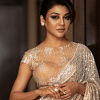Why is the 2023 Met Gala so controversial?

Met Gala is the annual fundraising charity gala for the Costume Institute of The Metropolitan Museum of Art which also serves as the opening of the spring exhibition of the institute.
The theme of the Spring 2023 exhibition is "Karl Lagerfeld – A Line of Beauty", showcasing 150 pieces of the iconic German designer's work, with corresponding sketches which spanned across Chanel, Fendi, Balmain, Chloe, Patou, and his eponymous label, Karl Lagerfeld, in the span of six decades (1950-2019). The dress code for the gala is "In honour of Karl".
As a celebration of the gala, American Vogue's May issue pays tribute to Lagerfeld, featuring 10 models he loved working with, wearing reinterpretations of Lagerfeld's work done by 10 designers. Some of the models include Gigi Hadid, Naomi Campbell, Kendall Jenner, and Shalom Harlow. The featured designers include Donatella Versace, Pierpaolo Piccilio of Valentino, Olivier Rousteing of Balmain, and others.
Karl Lagerfeld is certainly an unparalleled designer and his body of work is a testament to that. So why is celebrating him turning out to be so controversial? Ahead, we explore the controversial legacy of Karl Lagerfeld.
Who is Karl Lagerfeld?
Karl Lagerfeld's silhouette is instantly recognizable. The designer's ponytailed silver hair tied, always, with a velvet ribbon, oversized sunglasses, high-collar shirts, black suits, and cut-off black leather driving gloves were as distinctive as personal aesthetics come.
A polyglot who spoke German, French, English, and Italian he is known most widely for being the creative director of Chanel from 1983 until his death in 2019. He modernised and revamped the brand, plastering the interlocked double C logo on everything, making it one of the most easily identifiable global logos, displaying his branding genius.
At Chanel, he blended the cultural zeitgeist with the house codes to cater to a modern crowd. He reinvented the classic boxy tweed suit, expanded Chanel's fabrication, and reimagined the house codes, which turned the brand into a $10 billion empire.
He was also the creative director at Fendi for 50 years, making him the longest-standing creative director of a fashion house. He revitalised the leather goods and fur brand, making it a mainstay for fashionistas globally.
His career started in full force after working for Pierre Balmain as his assistant. He was scouted by Balmain after he won the International Woolmark Prize in 1954 at the age of 21. Three years later, he became the art director at Jean Patou. He began working for Chloe on a freelance basis in 1963. His indelible mark at Chloe, in retrospect, was the biggest marker of his talent for reviving and revamping fledgling brands and making them household names.
Lagerfeld let his creativity run wild when it came to designing the most out-of-the-box, wild, and theatrical catwalks for his shows at Chanel and Fendi. He transformed Paris's Grand Palais into everything from a scaled-down Eiffel Tower, a life-sized rocket ship, a beach with a moving tidal machine, and Chanel lifeguards, a 148-meter ship that took a month to install, to an elaborate supermarket filled with Chanel-branded produce, even bringing in icebergs from Scandinavia.
He was a sartorial tour de force, creating more than 15 collections annually as well as designing costumes for theatre and ballet productions. An avid illustrator and photographer, the designer shot most of Chanel and Fendi's advertising campaigns himself and hosted exhibitions of his personal work.
The unsavoury, cruel, and controversial side of Lagerfeld's legacy
Notorious for his sharp tongue and lack of filter, he found himself in hot waters quite frequently for misogynistic, racist, and fatphobic comments.
Lagerfeld made comments such as "no one wants to see curvy women", calling fashion, "the healthiest motivation for losing weight." He critiqued "fat mothers with their bags of chips" for "sitting in front of the television and saying that thin models are ugly."
He had been vocally critical of women who are bigger than sizes 0 and 2. His fatphobia and overt cruel fixation on women's faces and bodies extended to unsolicited critiques of celebrities. Lagerfeld called singer Adele "a little too fat", and supermodel Heidi Klum "too heavy". About Pippa Middleton, his remark said "I don't like the sister's (Pippa's) face, she should only show her back".
Karl Lagerfeld defended Dominique Strauss Kahn, the former director of the International Monetary Fund after he was accused of rape. He was against the #MeToo movement. The designer said he was "fed up" and skeptical of accusations from "starlets who have taken 20 years to remember what happened."
He further dressed white supermodel Claudia Schiffer in both blackface and yellowface for a 2010 editorial shoot. He maintained a strong stance, promoting the use of animal fur.
The fashion industry always preferred to overlook Lagerfeld's offensive remarks in light of his artistic contributions and hailed him as a visionary. The exhibit, much like the reverent obituaries that followed his death, is an attempt to sanitize or revise Lagerfeld's legacy by focusing solely on his art, rather than acknowledging the uncomfortable truth about who he truly was.

 For all latest news, follow The Daily Star's Google News channel.
For all latest news, follow The Daily Star's Google News channel. 








Comments